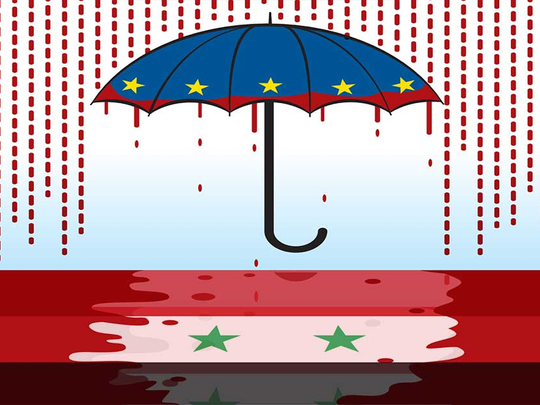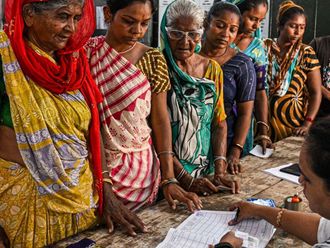
About a week after the first Vienna meeting — which brought together the foreign ministers of Saudi Arabia, Turkey, Russia and the United States to discuss ways to end the Syrian conflict — the second Vienna meeting was held on October 30, 2015. It included all the parties involved in the Syrian crisis and resulted in an agreement on a nine-point statement that sets out the general framework for the anticipated political solution in Syria. The third Vienna meeting, which convened on November 14, produced a road-map to peace with a timetable attached along two parallel tracks. The first called for the launching of a political process to end the five-year conflict. The second called for unified regional and international efforts to confront extremism and terrorist groups.
The two parallel-tracks formula was the result of tough negotiations between the key regional and international players in the Syrian conflict. The Vienna meeting emphasised the need for the states concerned to agree on the groups that should be placed on the list of terrorist organisations. Jordan was asked to prepare this list in cooperation with other countries, a task that should be completed before the launch of the political process. The Russian side ‘benefited’ from the Paris attacks, which occurred on the eve of the latest Vienna meeting, and pushed for the adoption of its own position, which considered the fight against terrorism the main element of both the Syrian conflict and the agreement to end it.
The Vienna meeting did, however, acknowledge the fact that without a credible political process to solve the Syrian conflict, the fight against terrorism would result in absolutely nothing. According to this approach, terrorism is the result and not the cause of the Syrian crisis. Had it not been for the viciousness of the regime and its use of extreme violence, including chemical weapons, to suppress a non-violent revolution, as well as the regime’s decision to turn for help to Iranian-backed sectarian militias, terrorism would not have grown to an extent that enables it to strike in far-off places.
Accordingly, and in parallel with the agreement to list and fight terrorist groups, the necessity to launch a political process was agreed upon. A three-stage timetable was adopted, with an end-point in December 2017. Negotiations under a United Nations umbrella start at the beginning of next year with the aim of reaching and enforcing a ceasefire. Two further stages will see the establishment of a “credible, inclusive, a non-sectarian government, followed by a new constitution and elections” for parliament and president to be administered under UN supervision, with all Syrians, both at home and abroad — in refugee camps or migrants taking part.
Since the beginning of the Syrian conflict, and in the absence of a credible political process, regional and international powers have tried to maintain a very delicate balance of power between the warring Syrian parties. No party would accept a defeat of its allies or the victory of its enemies. This tendency became absolutely clear after Russia’s direct military intervention on the side of the regime. Pro-opposition regional powers increased the scale and scope of their support, undermining Russia’s plans to fundamentally change the balance of power on the ground. Russia’s failure to deal a fatal blow to the Syrian opposition, its fear of being drawn into a war of attrition in Syria, the growing threat of Daesh (the self-proclaimed Islamic State of Iraq and the Levant), the worsening refugee crisis and the transformation of Syria into a security, economic and moral headache — all encouraged the launch of the Vienna process.
Restructuring of regional order
Other factors have also played a role in persuading Russian President Vladimir Putin to agree to a political track alongside his military efforts in Syria. These include the shift in the international community mood following the resolution of the Iranian nuclear issue and Tehran’s return to the international fold. These developments have opened the door for a restructuring of the regional order and the role of the key regional actors. The approach of the US presidential elections may have also played a role in Putin’s decision to go to Vienna. Further hastening this movement have been the signs of fragmentation and disintegration within the Syrian regime, and indications of an imminent collapse of the Syrian army, as well as the failure of Iran and its allies to reverse the tide on the ground.
The Vienna process represents a new phase in the history of the Syrian crisis and may lead to the opening of a political process. There are, however, many sensitive issues that still need to be dealt with, chief among them is the fate of Syrian President Bashar Al Assad, his role in the transition and how to agree to the list of terrorist groups. Nevertheless, given that the Vienna process is the only game in town to approach the Syrian conflict politically, the interested parties will continue to search for opportunities to strengthen and support Vienna.
Dr Marwan Kabalan is a Syrian academic and writer.









